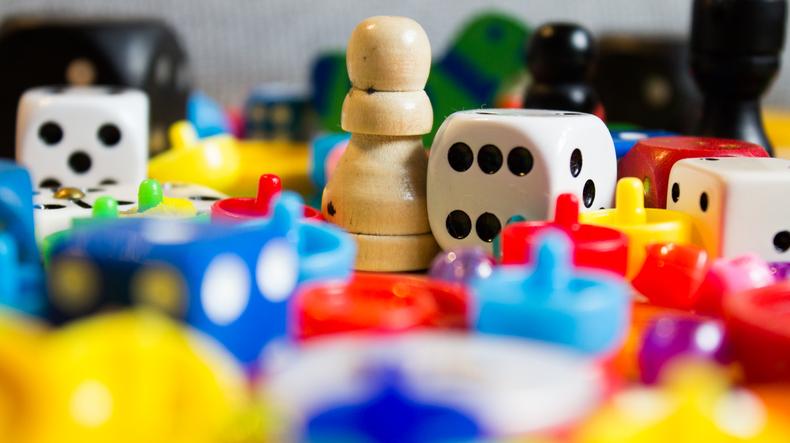Game-based learning is a powerful student-centred approach for boosting motivation, collaboration and participation. Games turn learning into an active, interactive and enjoyable experience that captures students’ attention. They are also effective in deepening students’ understanding of core concepts and theories, and in helping them apply these through the gaming process.
Game-based learning v gamification
Game-based learning refers to just adding games, such as digital web games, or physical puzzle/board games, to make lessons more entertaining. We need to carefully select games that are designed to teach specific content or skills and align with the intended learning outcomes of our classes.
Gamification refers to the use of game design elements, such as points, badges, leaderboards, storylines, role play, quests or purposeful choices, to encourage participation and tap into students’ intrinsic and extrinsic motivations, creating a sense of achievement, progress and competition.
- Ready, player one? How video games can help engage students
- Four ways to use gamification to engage your students in learning
- Let’s seriously game higher education to tackle the challenges ahead
Studies and my personal experience also show that both gamification and game-based learning can improve student engagement and knowledge retention, and it’s just a matter of how to optimise the gameplay to ensure they get the most out of the experience.
Case study: game-based learning in a maths course
I led a project embedding game-based teaching into a maths course for computer science students. This course, which covers complex topics such as recursion, graph theory and cryptography, often presents significant challenges for non-mathematics students. The course was also revamped into a blended learning format. Students watch lecture videos online to learn core concepts then dedicate class time to hands-on, game-based activities that reinforce those concepts.
An effective game-based learning course must be intentional. The ultimate goal is not to “entertain” students – rather, it is to create an environment where learning is active, meaningful and engaging.
To do this, I introduced a combination of custom-designed digital and physical educational games that aligned with the course’s intended learning outcomes, including RSA Battleship Board Game (number theory and cryptography), L-Shape Tiling Puzzle (recursion), Tower of Hanoi (induction) and the Math Casino (probability). These games emphasise problem-solving, strategic thinking and collaborative learning; they are carefully designed to foster mathematical thinking and serve as formative assessments.
Designing meaningful games requires a blend of strong pedagogical grounding and technical expertise. To address this, I collaborated with a maths teacher who has experience in game-based learning, and a game programmer to develop web games and design the reward systems with the following gamification elements:
- Points and badges: These reward systems provide instant gratification and reinforce progress, motivating students to complete tasks and aim for higher performance.
- Leaderboards: Ranking students based on performance introduces a competitive element, which can help foster peer recognition.
- Indication of progression: Progress bar, journey map and levelling system showing advancement through tasks help students self-monitor and stay committed to their learning journey.
- Attractive storylines and quests: Embedding course content within a storyline or challenge to motivate and turn repetitive exercises into exciting quests and missions.
- Immediate feedback: Games provide real-time responses, allowing students to immediately recognise their mistakes and deepen their understanding.
Getting started with game-based learning
Here are some practical steps to help educators begin integrating game-based learning into their teaching:
- Try something small: Get started by incorporating simple elements such as backing up a complicated question with an interesting storyline into paper-based homework or teaching materials.
- Align with learning objectives: Brainstorm as many game ideas as possible that align with the intended learning outcomes, then filter out those that are more engaging and easier to implement.
- Digital v physical games: Once a game is selected, decide whether a digital web-based game or a physical puzzle/board game is more suitable. Sustainability is an important consideration: while digital games do not wear out, they could eventually become unusable as a result of outdated software or operating system compatibility.
- Collect and review the chosen games: Use classroom observations, surveys and student focus groups to continually assess and refine the gamified elements.
- Foster collaboration: For introductory courses with students from diverse majors or backgrounds, team-based activities can enhance peer learning and help students get to know each other at the beginning of the course.
Challenges and considerations
Despite the benefits, implementing game-based learning presents several challenges. First, it requires a significant upfront investment of time and resources to design and develop meaningful games that align with our intended learning outcomes, as well as to determine the most suitable delivery modes for the games (for example, board game, web game, puzzle game or escape game).
Accessibility is a major concern: not all students will be equally comfortable with digital interfaces, collaboration/communication or competitive environments. There is also the need to balance competition with collaboration: overuse of leaderboards, for example, can demotivate lower-performing students. Integrating games into formal evaluation through follow-up maths questions, bonus points or reflection reports can be challenging.
To further motivate students, I awarded bonus points to top-performing teams and sometimes embedded game scenarios into exams, ensuring that game participation was meaningful and academically rewarding.
Gamification and game-based learning are distinct yet highly effective strategies: game-based learning uses full games to teach specific content or skills, while gamification adds game elements, such as points, badges and quests, to non-game activities to boost motivation and engagement. My experience implementing game-based learning demonstrates how it can be combined with gamification to transform challenging mathematics topics into accessible and enjoyable learning experiences.
Kenneth Wai-Ting Leung is associate professor of engineering education at Hong Kong University of Science & Technology.
If you’d like advice and insight from academics and university staff delivered direct to your inbox each week, sign up for the Campus newsletter.




comment